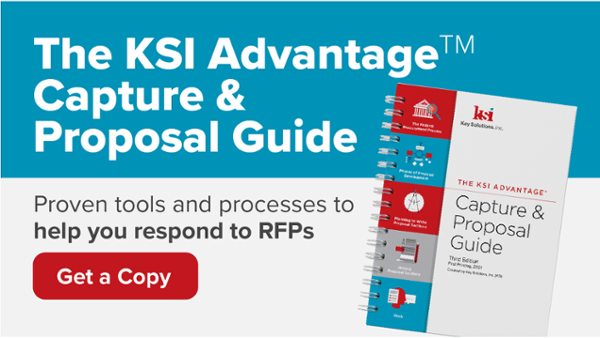
What do you do when the Request for Proposal (RFP) provides a voluminous Statement of Work (SOW) or Performance Work Statement (PWS) and a minimal page count in which to address it in the proposal?
Here are a few approaches on how to streamline your proposal and ensure compliance.
1. Determine what is a necessary requirement.
Look for instructions in the RFP to see whether any language specifically addresses how much of the SOW or PWS must be addressed. Sometimes Section L contains language stating that addressing all SOW or PWS elements is not a requirement.
In this case, you can explain your technical approach in the form of a higher-level discussion of the major SOW or PWS elements without providing all the details of each sub-element and still be compliant.
You can address individual sub-elements that are an integral part of the approach using embedded reference numbers to highlight where they are discussed so that they can be easily identified by evaluators, or you can highlight some of the keywords in bold text (use this latter approach only if the proposal is very short, however, because text with too many highlighted words is exhausting to read).
2. What if you aren't able to eliminate some SOW/PWS elements?
If all SOW/PWS elements must be addressed, you have a major challenge. Review your page count for the proposal and determine how many pages you can allocate to the SOW/PWS.
Look for ways to streamline/tighten other proposal sections to free up additional space. Eliminating transitional clauses between sentences that don’t add value, redundancies, and extraneous details or information not specifically asked for will make it read better anyway!
In our Comprehensive Guide to High-Quality Proposal Writing, Ashley Kayes recommends "replacing redundant phrases such as actual experience with experience; advanced planning with planning; close proximity with proximity; consensus of opinion with consensus. Remove clichés that do not add value, for example, world class, best of breed, and silver bullet. Additionally, writers sometimes feel the urge to add emphasis to their prose by using extra words or phrases that do not contribute to the meaning (and sometimes obscure it)." Consider the swaps in the table below.

Then review the number of SOW/PWS elements you have and decide which ones are the most important based on your knowledge of the customer’s needs and wants and their importance as reflected in the RFP. For example, section 5.2, Acquisition Support in an acquisition support RFP will require a more detailed response than section 5.9, Training.
Then, write to the major headings and provide tables that contain all of the sub-elements, concisely stating that you will perform the task, and where the “how” is important to the customer, state briefly how you will do it. Combine “like” items together wherever it makes sense to save space.
3. Writing individual sections.
One approach that is widely used in writing to individual SOW/PWS sections is to:
- Briefly state your understanding of the requirements
- Describe your approach to performing the work (the “what” and “how”)
- Provide a proof statement that this approach is feasible and/or has worked before on specific prior projects
- Close with the benefits to the customer of adopting the approach. With practice, responses to many SOW/PWS elements can be condensed into a few sentences.
4. Creating a requirements matrix
If RFP instructions allow, you can create a Requirements Matrix and insert it into your technical volume behind your table of contents and acronym list as a guide for evaluators.
5. What do you do when the page count isn't enough?
There are some RFPs, however, for which the page count is wholly inadequate. If you cannot find a way to address the RFP requirements in the available page count, you can always ask the Contracting Officer for additional page count during the Question and Answer period.
If you can offer a compelling case for increasing the page count by a reasonable number of pages, the Contracting Officer may grant your request.
CONCLUSION
Follow these tips on responding to large Statement of Work and Performance Work Statements to help you streamline your proposal. If you need more guidance on effective proposal writing techniques and tools, check our KSI Advantage© Capture & Proposal Guide.
This post was originally published in November 2014 and updated on October 15, 2020.








